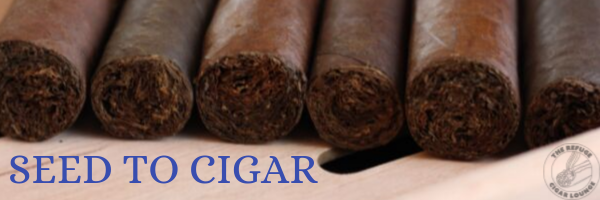After roughly 45 days, the infant plants are evaluated. The strongest plants are then transplanted into the tobacco field at very precise intervals. A row is marked with string and a worker walks the line marking each spot with a stick. Depending on sun, water, and soil, the plants will continue to grow for roughly another 45 days before their first harvesting.
You’ve heard the terms “sun-grown” and “shade-grown” before. But do you know what they actually mean? Bet you can guess sun-grown is literally that: planted out in the open with no cover. Shade-grown, however, is not planted next to the biggest tree in the field using the leaves for cover. It actually means the tobacco is planted under a suspended ceiling. This ceiling can be made of either cheesecloth or a synthetic mesh to screen out the direct sun rays.
Next week we’ll discuss more about the plants, including the different leaves and harvesting practices. Stay tuned!

